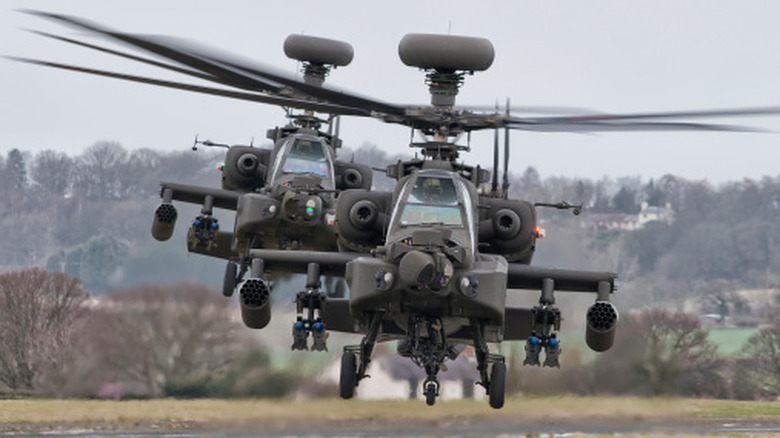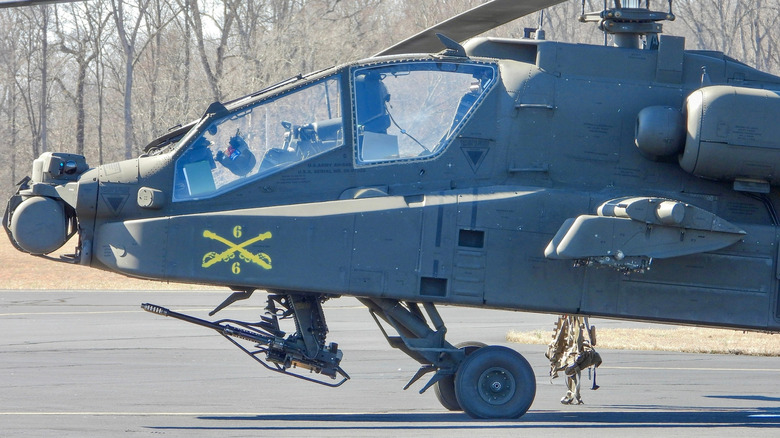Why Does The Apache Military Helicopter Have Wire Cutters In The Front?
Helicopters have an inherent maneuverability advantage over airplanes, generally speaking. Helicopters can hover in place, and for quite some time if the conditions are suitable. While their rotors give them that freedom, they also present a very vulnerable point for the aircraft. If you've ever gotten something tangled up in a ceiling fan, you'll know that those spinning blades absolutely should not be messed with, and getting trapped in overhead wires can cause a lot of damage at best and be potentially fatal for all on board at worst.
When flying low to the ground, especially when visibility is poor, such cables can be deadly to even the most capable helicopter pilots. That's why the Apache helicopter has wire cutters in the front. Not a set of wire cutters in the cockpit, but a Wire Strike Protection System (a name trademarked by Magellan Aerospace). The system is carefully adapted to the type of helicopter it's fitted for, and perhaps the most important elements of it are the twin cutters. They're positioned on the front of the aircraft, with one above the windshield and one below.
Between them is what Magellan Aerospace deems a Windshield Deflector. Together, these crucial parts make up one potentially invaluable life-saving system. If overlooked, wires can be in the helicopter's path quicker than the pilot can react, so this wire cutter system is all but free of the need for manual activation. Helicopters have had a huge impact on the development of the U.S. Army, making them a valuable asset worth protecting.
How a Wire Strike Protection System Works
The Wire Strike Protection System has been used to help protect some of the most iconic military helicopters, but it unfortunately can't protect against any and all potential contact, but it's a valuable layer of security. The concept is simple: Should the helicopter strike wires from the front, the windshield deflector can 'feed' the cable toward one of the cutters, shearing it away and minimizing any potential damage. A significant challenge is the inability to pre-empt every angle that a chopper may clip a hazard or the speed it may be moving. Nonetheless, Magellan Aerospace notes that it's designed to be primarily effective for "a helicopter in forward and level flight."
The WSPS was retrofitted to the Black Hawk helicopter family as well as the Apache between the 1980s and 1990s. According to the U.S. Department of Transportation (via Skybrary – downloads a PDF to your device) in 2008, "all military helicopters would have had a WSPS system installed by the end of 1992."
In 2009, according to a Magellan Aerospace (downloads a PDF to your device) press release, the company hit 20,000 Wire Strike Protection Systems sold. It has likely been a hit with the military because it's not a complex piece of machinery that places additional demands on the pilot. It's designed to be unobtrusive, and is versatile enough to be suitable for many different helicopter families, including outside of the military sphere.

